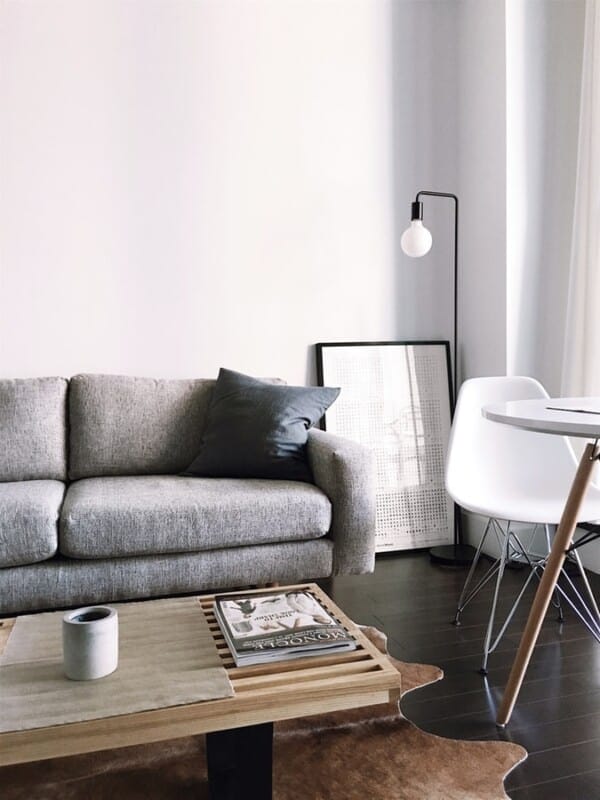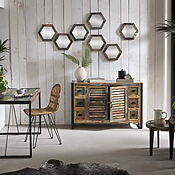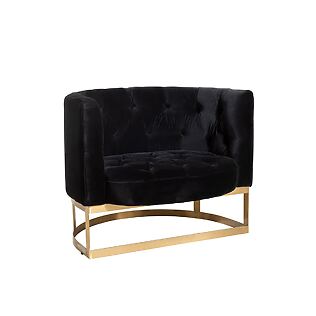The modern world of living has seen numerous minimalist styles come and go. But there's one purist interior design trend that will likely never truly go out of style: Scandinavian interior design, colloquially known as Scandi style , Scandi style , or Scandi chic .
This combines various textures in an almost perfectly appearance, the game with contrasts, gentle colors, emphasizes modern and strictly functional furniture, and the use of natural materials. He manages to create a cozy and cozy atmosphere that one would not expect per se with a rather puristic and reduced furnishing style.
Like no other interior design style, it fulfills our apparently opposing needs for order and cleanliness on the one hand and comfort, comfort and cosiness on the other.
It's no wonder, then, that Nordic design is once again making a triumphant comeback around the globe. Even if you don't have a specific, clear image in your mind when you think of it, there's a relatively high probability that you've already encountered this style.
So you can't avoid it on social media, design blogs and specialist magazines. The variety of design tips and suggestions for this is hardly manageable. Even when strolling through furniture and furnishing houses- and here Ikea is not meant- you notice the increased dominance of furniture and furnishing ideas from the European north.
What distinguishes Scandinavian design?

As already mentioned, the key feature of this style is the combination of modern elegance, functional approaches, cozy accents and elements inspired by nature.
A special feature that has made an important contribution to the popularity and distribution of this living trend is also the simple aesthetics, which can be combined almost seamlessly with almost any other style and is also timeless.
Let's take a closer look at the individual features.
Minimalist / purist credo
If you look closely, you can already see nuances that distinguish Scandinavian design from trends like minimalism , modernism, and contemporary decor. Nevertheless, it can safely be described as minimalist, with a strong focus on simplicity and functionality.
No mess - clear order - avoiding unnecessary elements - functional and reduced to the essentials.
Niki Brantmark, the author of "Lagom: The Swedish Art of Living A Balanced, Happy Life" and owner of the English -language blog My Scandinavian Home as follows Nordic access to design:
Scandinavian design has a tradition of Striving to Ensure Everyone Has Access to Good Design, Not Just The Elite, She Explains. "This is why you'll See Beauty in everyday pieces. Ikea is a good example of this."
Translated into German:
Scandinavian design has a tradition to strive that everyone has access to good design, not just the elite. That is the reason why you can find design beauty in objects of everyday life. Ikea is a good example of this. "
Inspiration from nature and the environment
For the first time, this trend appeared in the 1930s. He then became really popular in the 1950s. A design show made a significant contribution to marketing and marketing through the USA and Canada between 1954-1957 and marketing work by Nordic designers .
The emphasis was on simple patterns and styles inspired by the region's nature and environment. People quickly embraced the simple aesthetics and beauty that thus found their way into their everyday lives.
The close relationship with nature can also be found in the selection of materials. This means that wood, stone, skins, wool and the like are often used. The combination with industrial elements made of iron or steel can also be found again and again-for example in lighting or closets. also includes wood shelves

One such example is the Rackbuddy John wooden shelf with silver tubing fittings. Light pinewood combined with galvanized iron fittings is definitely influenced by Nordic style and underscores a Scandinavian look – with a touch of industrial chic .
Improvements for daily life
It's in the DNA of Scandinavian style to positively transform people's daily lives. In the Nordic countries, inhabitants often have to make do with less than seven hours of daylight during the winter months. It's only natural, then, that lighting plays a fundamental role in interior design. This is also reflected in the Scandinavian style.
In addition, you will probably not find outdoor carpets or carpets. Rooms should look lighter and friendly through natural floors (often made of wood) or white floor coverings.
The furniture is strictly functional, has a modern and straightforward look and often the purpose of using space as effective as possible. Now I am no longer surprised that Ikea furniture can be found especially in small student stalls. Incidentally, windows are not imposed in the Skandi-Chic or only very discreetly or framed. So the maximum of light gets into the rooms. A charming side effect is that you do not have to dust out and clean curtains.
Textures against too much baldness
The use of textures, patterns and different surfaces revives larger areas and ensures that they are staged in an exciting way. This prevents the apartment from being bare, empty or too factual.
This way, you don't have to clutter your apartment with knick-knacks and unnecessary decorative accessories. Scandi style largely works without decorative objects.
Textiles such as sheepskin, wool, and mohair are also frequently found in Scandinavian interiors . A necessity in cold climates, they also create a cozy and homey atmosphere here. One rule of the Scandi style states: every element should not only be decorative, but above all, have a concrete practical use.
Reserved coloring with carefully set accents
The prevailing color pallets are neutral, gentle and reserved. No colorful color mixtures or brightly pop productions.
Bright, pastel tones form the basis - mixed with color accents from nature such as sand, earth tones, dark green, blue and all shades of gray and brown.
This use of subdued colors has a calming effect on our minds. A blessing and an oasis of relaxation in an increasingly hectic world.
Hygge is a attitude to life
Hygge - that's the name of cosiness in Denmark. Also happy to be called the Danish recipe for happiness that we take as a template to make ourselves really homely in the colder season.

This Danish term has been heard more and more frequently since 2016. It's often equated with a design trend, but this is far from the true meaning. Hygge is, after all, a way of life, a feeling for life, a concept for everyday life.
As a result, it also has a great impact on all design processes - not least in the interior design. The Scandi style is therefore based, but is not a synonym for it.
All one question of balance
Similar to the Danish word "hygge," the Swedes also have a word that strongly influences Nordic design: Lagom . It means "not too little, not too much." It's all about balance and creating equilibrium.
Converted to our needs when designing our interiors, Lagom therefore adheres to us to strive for a balanced relationship between minimalism and cosiness, old and new, cool and warmth. This is the only way to have a relaxed atmosphere and calming effect.
Timeless optics
Scandi charm has enchanted us for over 80 years. It wouldn't have succeeded if it weren't for its timeless design. The beauty of Scandinavian design is incredibly versatile and versatile, not to mention its practicality.
Clean and straight shapes, subtle colors, organic shapes and textures. An excellent foundation to build on it with other styles and bring in your own individual note.
You will find numerous inspiration and outstanding interior design examples of Scandinavian style in the following articles from us:
- Harmony through minimalism: What is Scandinavian living design?
- Colorful Nordic Design-Scandi style with color upgrade

Owner and Managing Director of Kunstplaza. Publicist, editor, and passionate blogger in the field of art, design, and creativity since 2011. Successful completion of a degree in web design as part of a university program (2008). Further development of creativity techniques through courses in free drawing, expressive painting, and theater/acting. Profound knowledge of the art market through many years of journalistic research and numerous collaborations with actors/institutions from art and culture.

















